It is not a secret that my most favorite place in the entire world is Maragoli. It is where my mind completely rests; and as someone with mild anxiety and a constantly ticking mind, that’s a huge thing. It is a place I find absolute peace. It is where I know I am completely safe and overflowingly loved. The emerald hills are story-book pretty and everyone is so warm and kind. One of the things I really love about finally growing up is the ability to drive out whenever I want. And because my work can be done form everywhere, I try be away from Nairobi as often as I can. I am writing this post from the back yard. My parents have since returned to Nairobi, but I chose to stay for an extra week and a half. It is peaceful. It is still. And I am happy. I will finish writing this and then set up my canvas and paint in the afternoon before the evening storms set in. This right here, is my dream life and I am living it!!
I had photographed this in my Nairobi home before driving out and found it fitting to complete this blogpost about a much beloved vegetable. Today is Monday and it is Market day at Mudete and I think I will pass by and buy a bunch and cook some using this recipe coz remembering how bomb this recipe was is making me drool! The recipe is very simple, with a #KK twist you will for sure love!
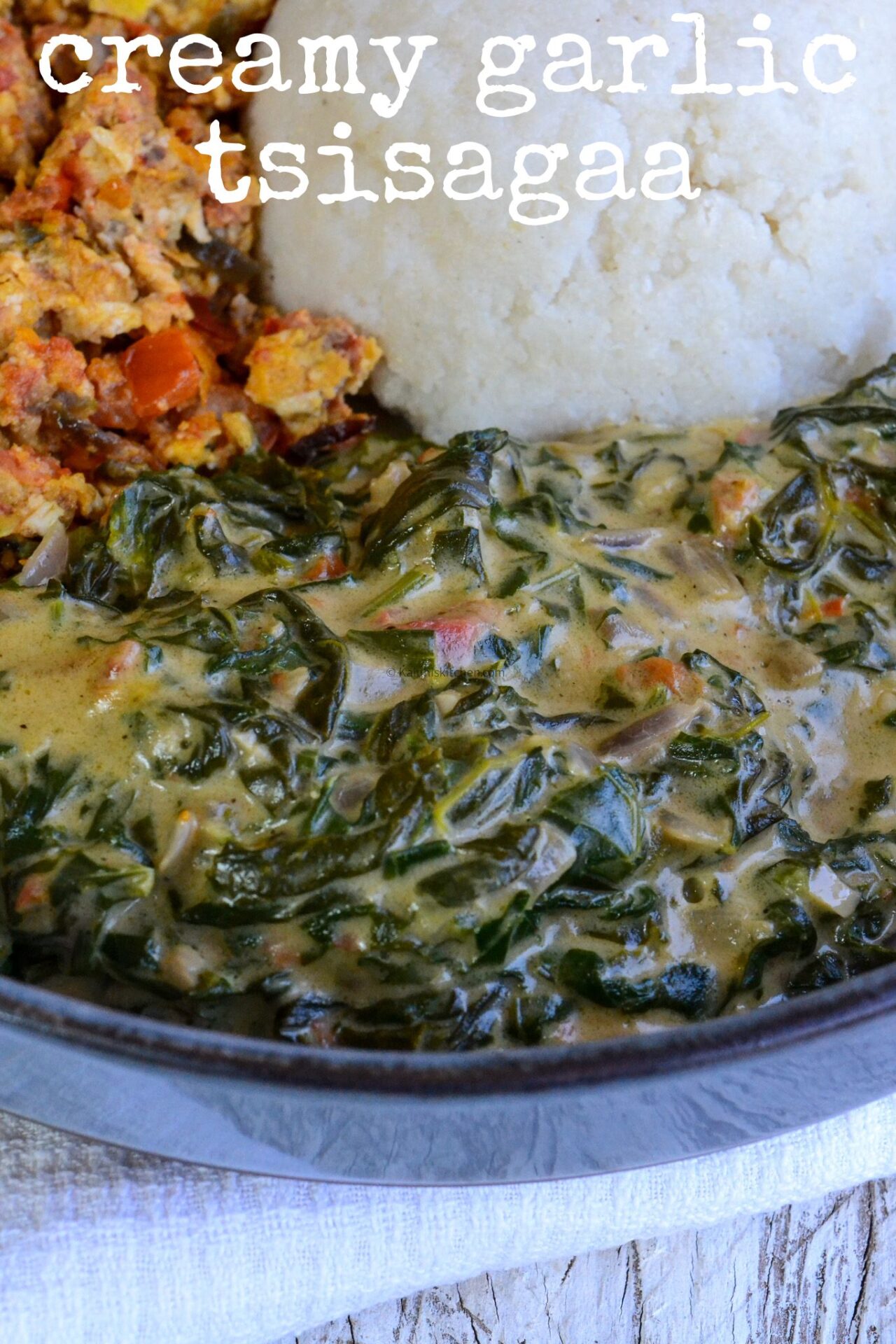
PREP TIME: 30 min COOK TIME: 15 min SERVES: 2
Ingredients
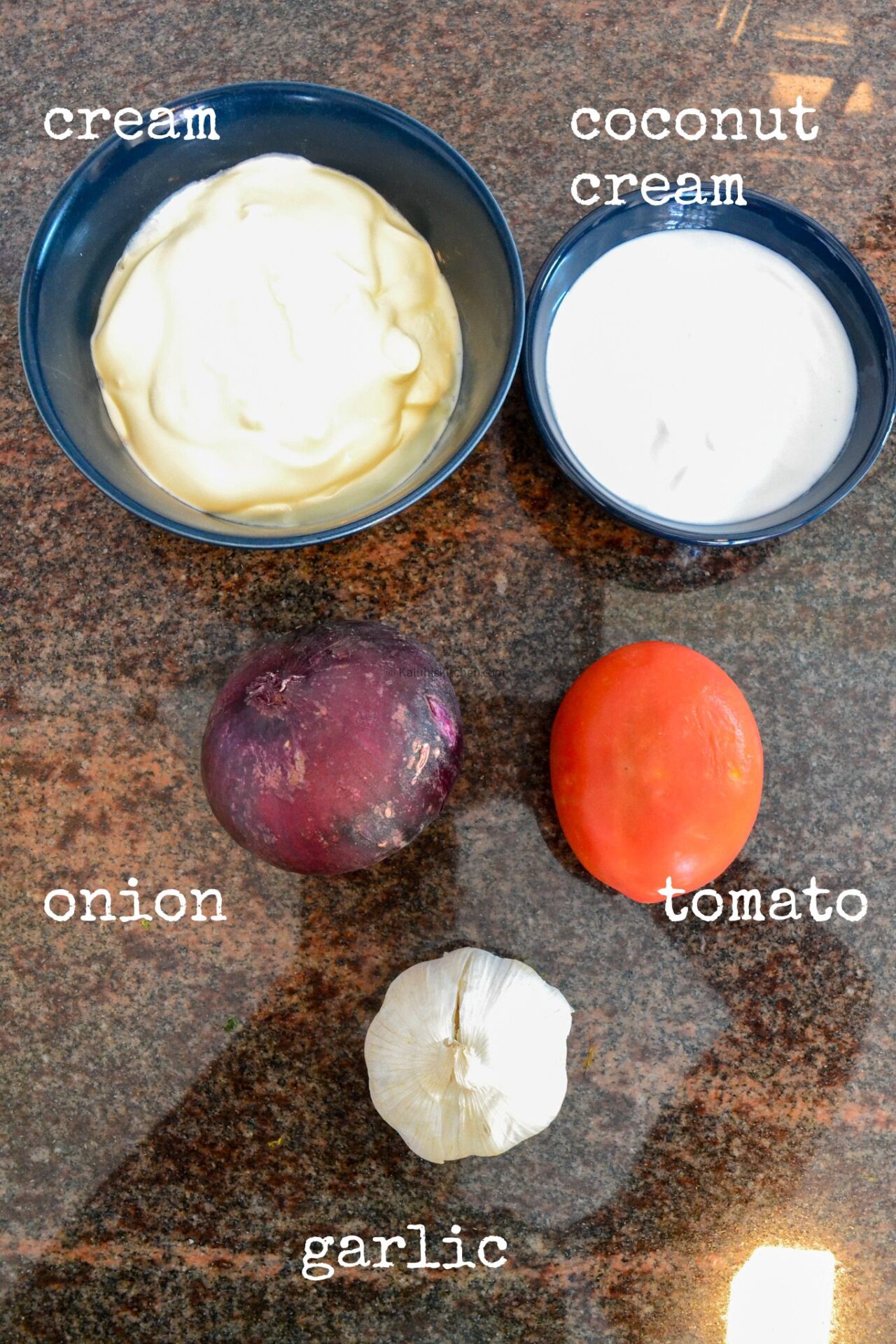
1 bunch of sagaa (tsisagaa)
1 bunch of kanzira
250g of cream
50 g of coconut cream
1 teaspoon of minced garlic
1 onion
1 tomato
Ghee to cook
Salt & Pepper to taste
Method
First things first, let us take about tsisagaa (pronounced zisagaa) or in short just sagaa. The Kalenjin call this same vegetable Saget, while the Kisii call it Chinsagaa. The Luo are also so familiar with this vegetable and I asked on Twitter what they call it but there was no consensus as per the replies. If you know the name, I would appreciate your input in the comments below!
This vegetable can be identified in the market using their distinct white purple flowers.
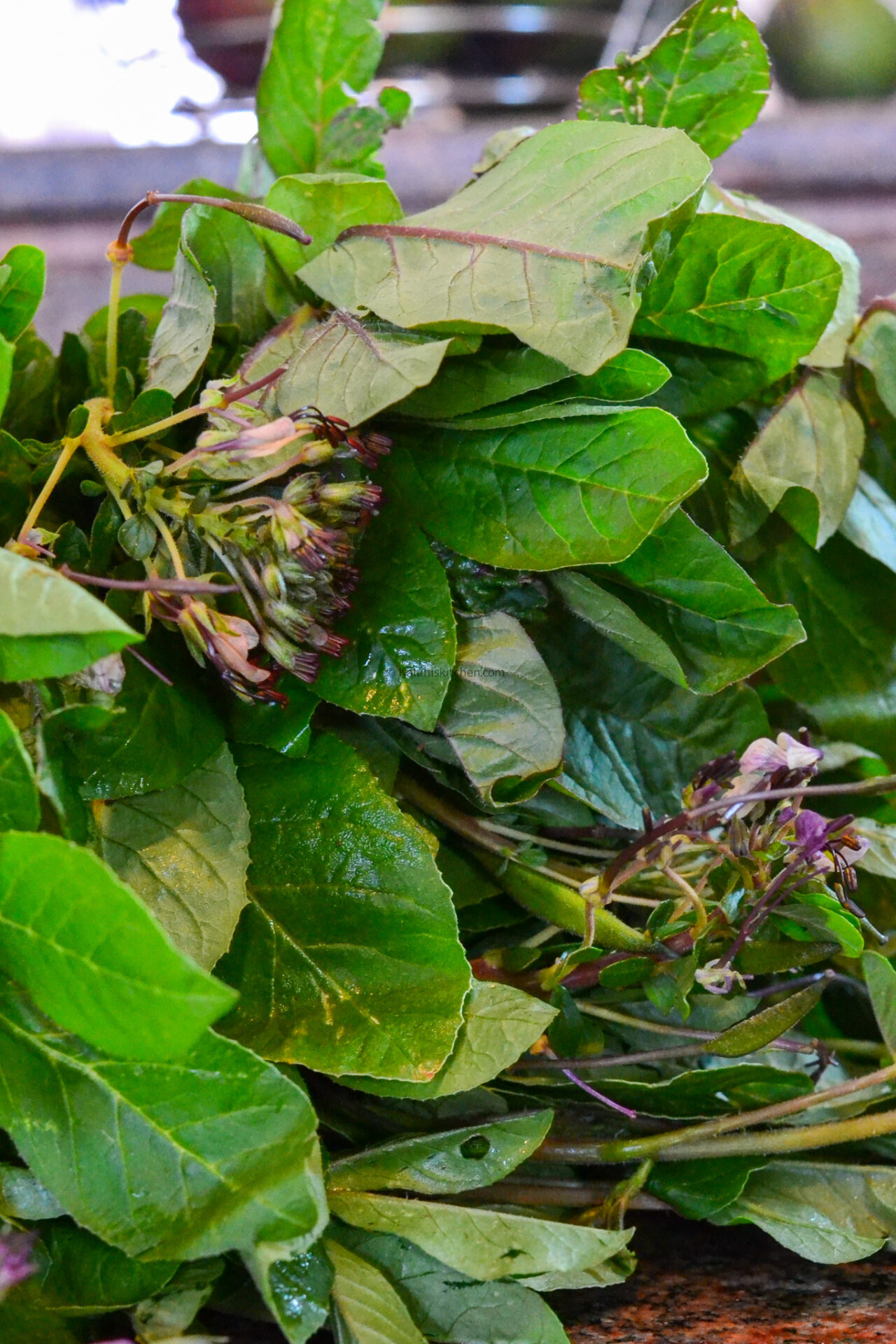
Taste-wise, they are known for their bitter taste, which I particularly enjoy. The young stems are mildly bitter but the older ones tend to be sharply bitter. To temper that bitterness, you can mix them with kanzira, terere and managu but moderately. In the event you cannot find those three vegetables, some spinach is a great vegetable to use to temper the bitterness of sagaa is you so wish.
On this day, I mixed mine with some kanzira.
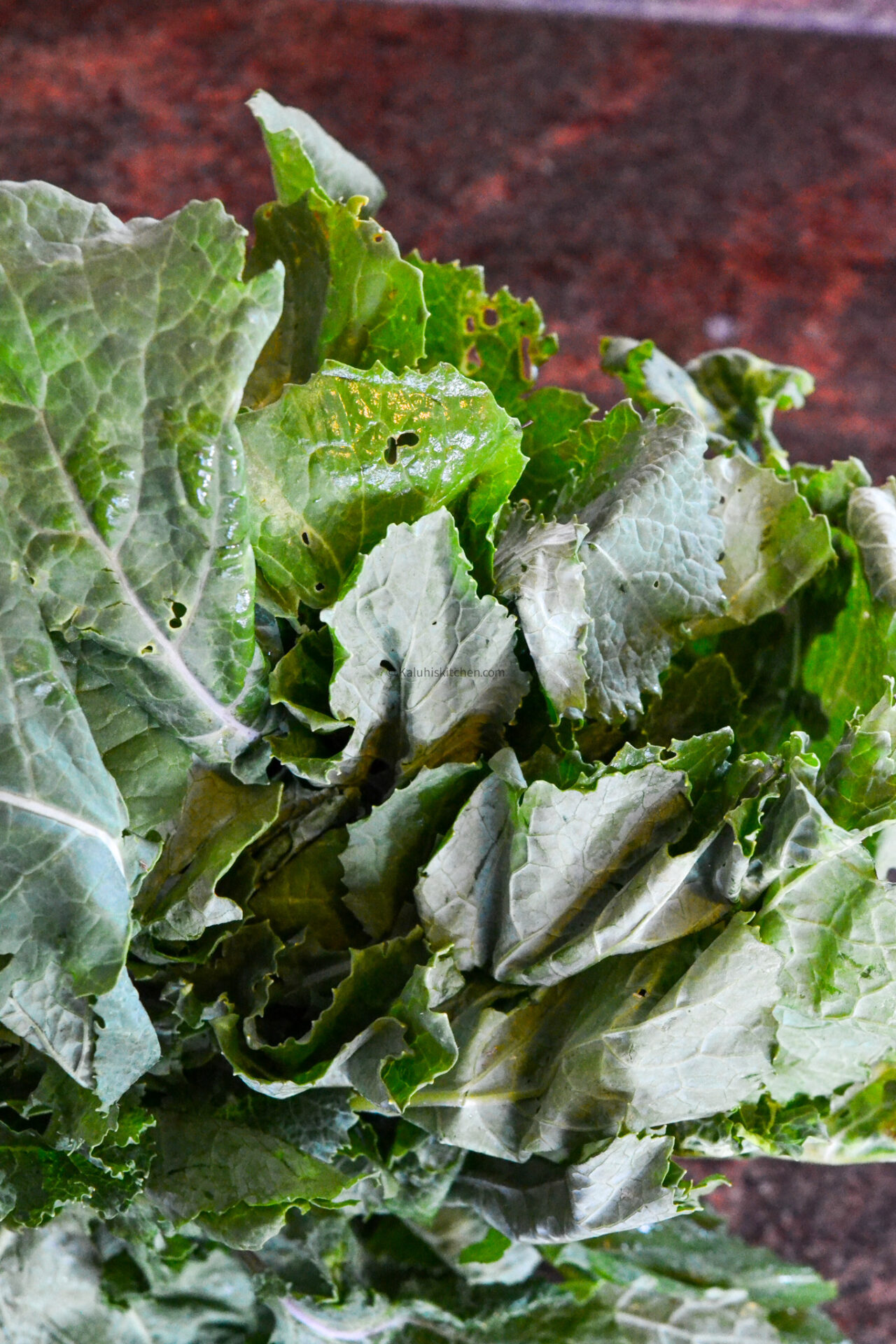
I bought both my sagaa and kanzira from naivas at 33bob a bunch. Carrefour usually has too but they are not labeled so for the majority who do not know how to identify vegetables without labels will have some trouble. Naivas have labelled theirs so well.
So, let’s get cooking.
The plucking of the leaves is very simple because the leaves are really large; the mboga that’s painstaking to pluck – in my opinion- is mitoo because they are tiny, needlelike leaves shu! Mitoo takes so much time!
Pluck your sagaa and roughly chop the kanzira.
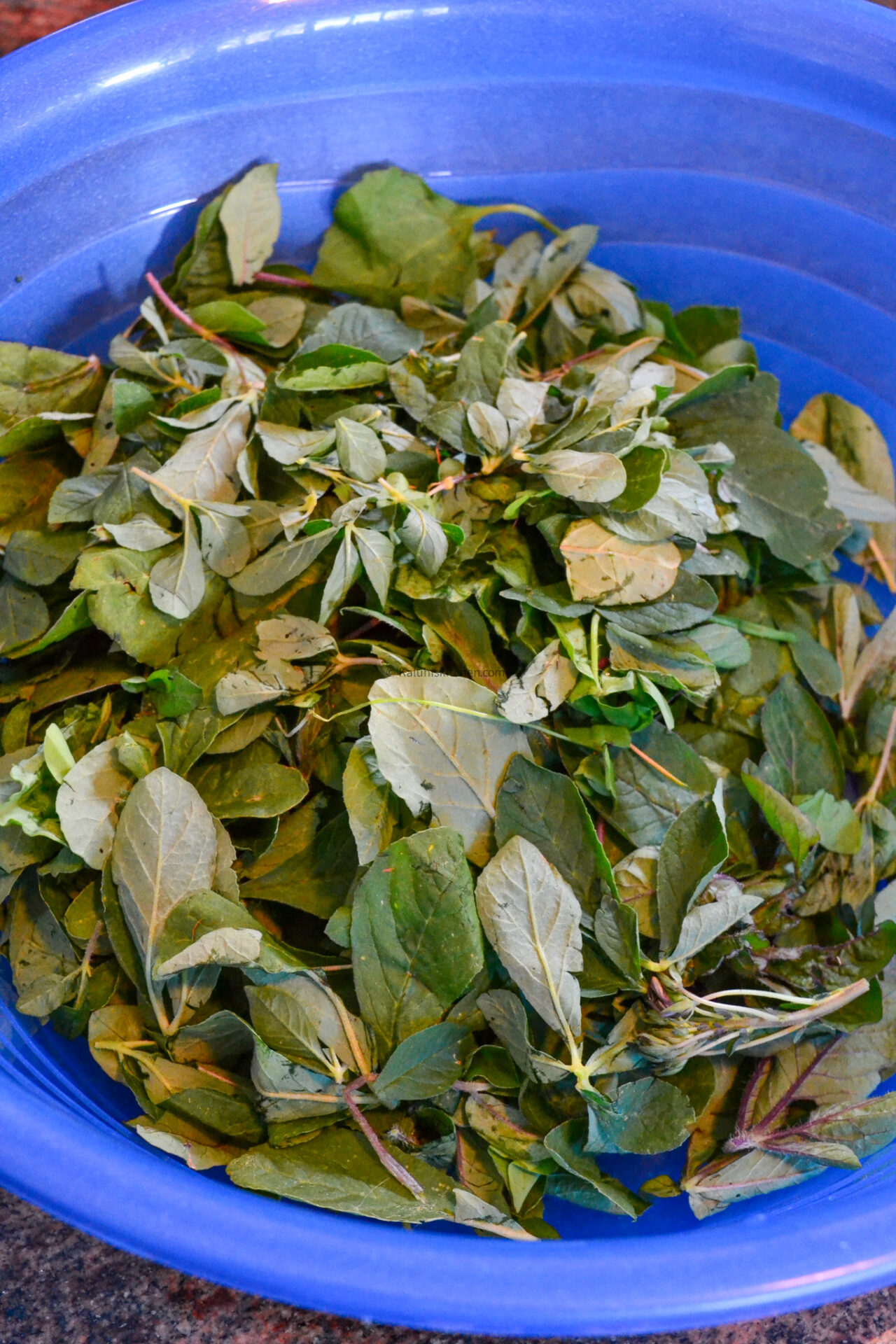
Proceed to blanch them together in a sufuria with hot water and a splash of munyu musherekha (optional but very much recommended). Munyu Musherekha is a salt that also doubles up aa a tenderizer. It is amazing for all traditional vegetables as well as kuku kienyejis and matumbo; sometimes fish as well. We make our’s at home but you can purchase yours from Kienyeji Store.
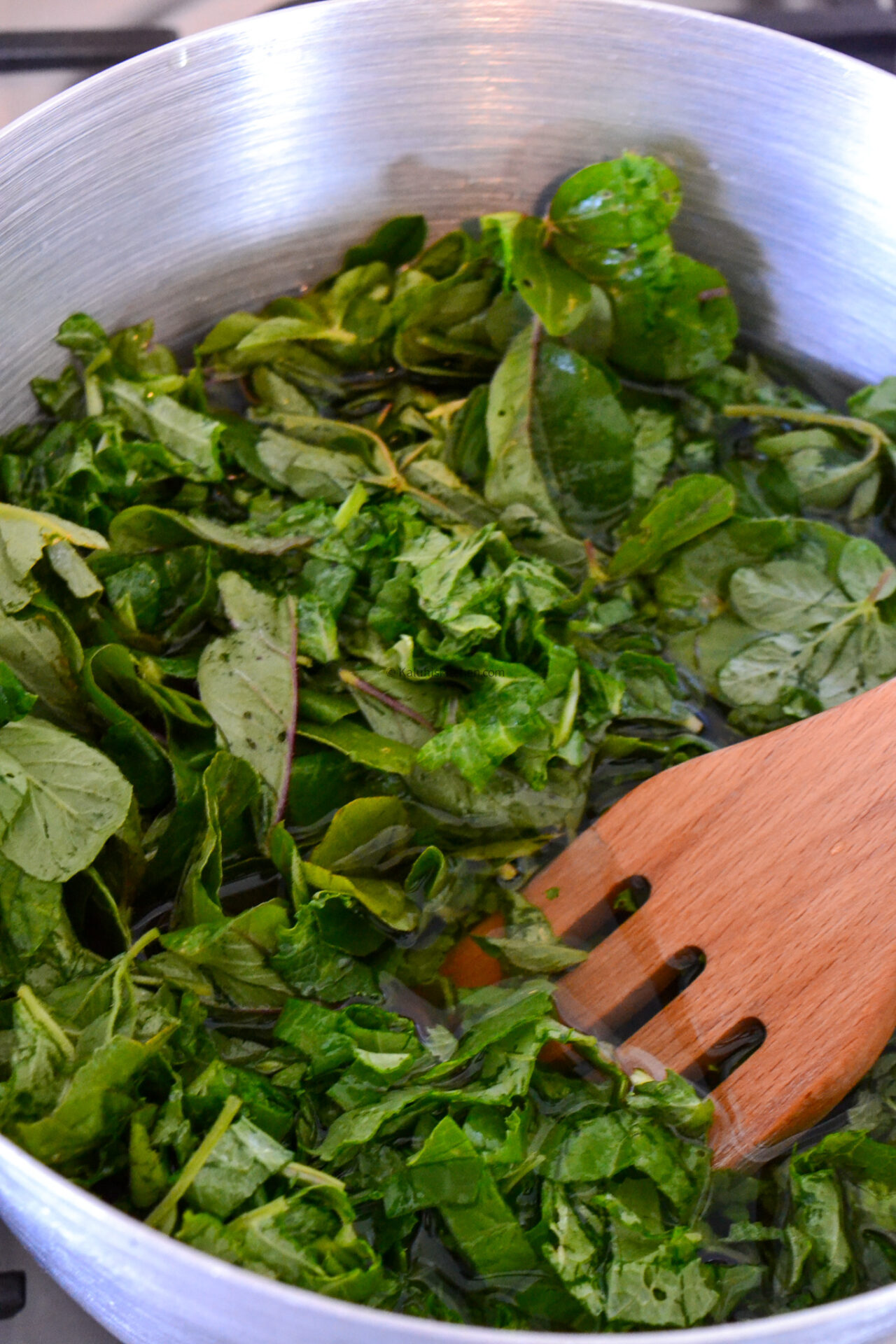
Blanch them until they are just cooked and still vibrant green. Most people have a tendancy to literally boil them for 600 nights until they turn grey, don’t be that person. A quick blanch is enough so that all it’s goodness is retained.
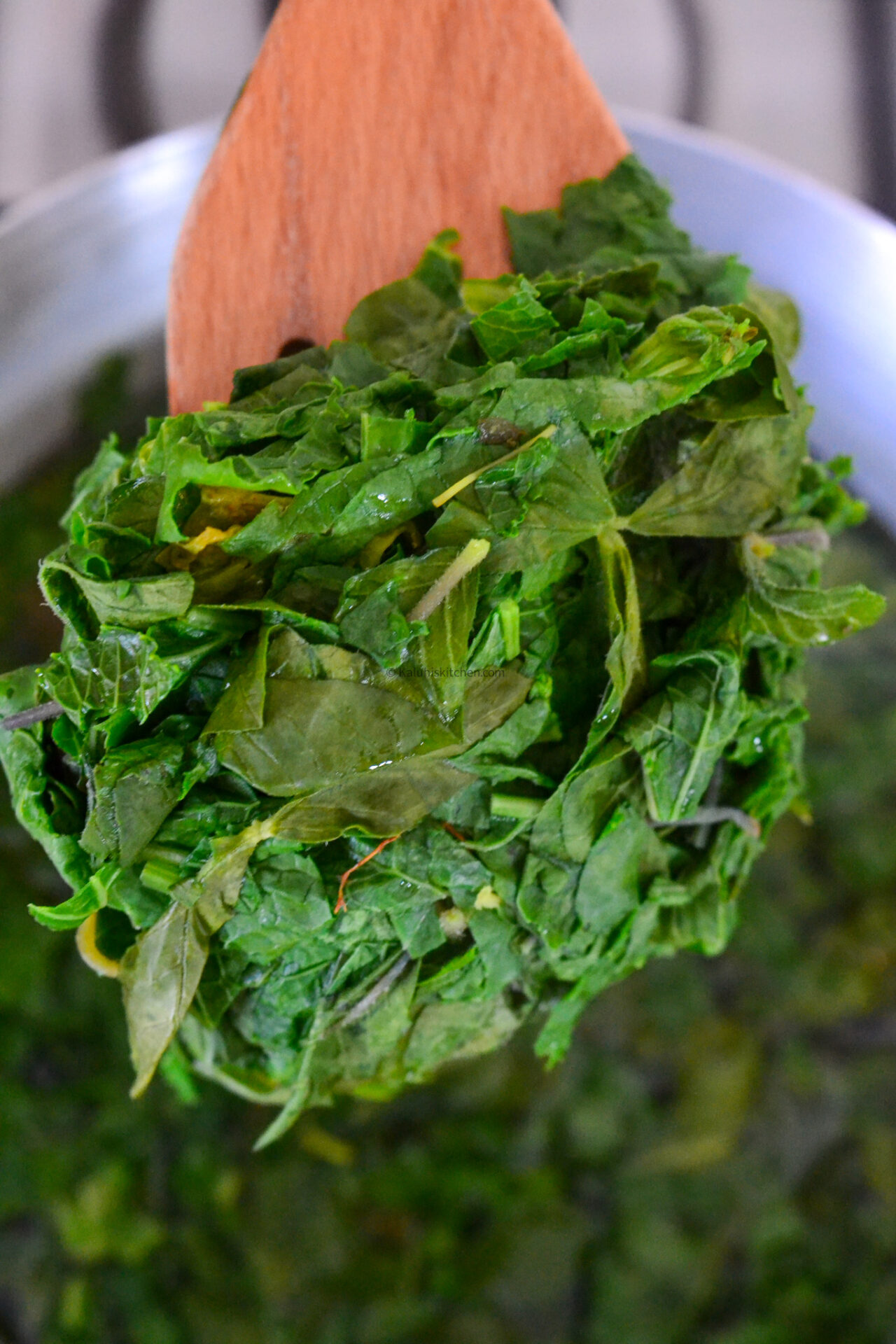
One full bunch of both kanzira and sagaa will result in 250 g of the same blanched. Vegetables do very significantly shrink after they are cooked and this is no different. So always start with a huge amount coz they will shrink down.
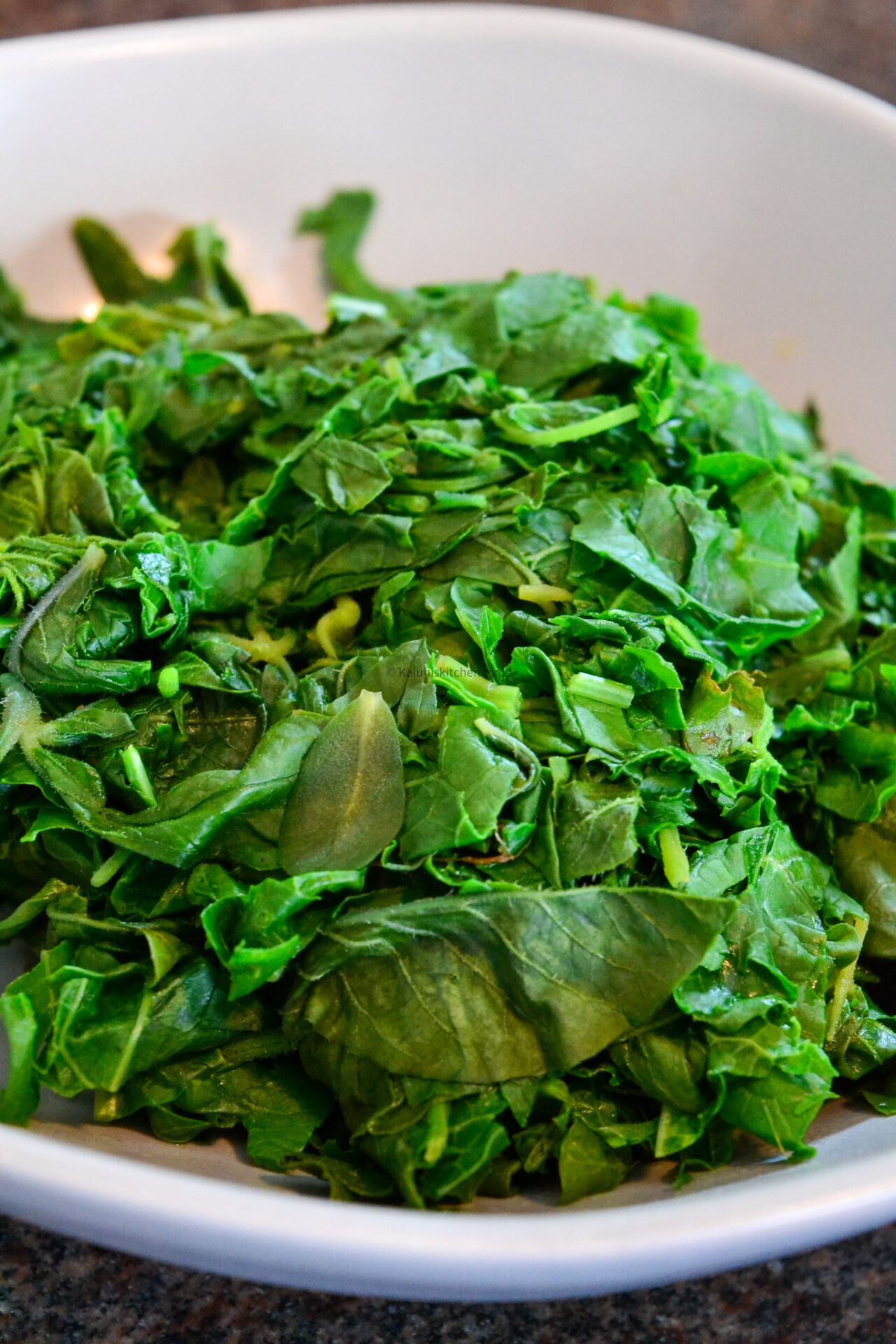
Set these aside and prepare for cooking.
*
“What if I want to freeze my veggies for a later time?”
I am a huge fan of freezing my kienyejis for later time and also to save one effort and slash cooking time. We do not freeze them raw & on the stem. When it comes to freezing kienyejis, blanch them first, allow them to * completely* cool down and then pack them in your ziplocks. Label them (both name and date so that you can know what is what) and then neatly stack them in your freezer. When you want to cook, grab a batch, allow it to thaw and cook as usual.
*
In another sufuria, melt in your ghee and some salt and pepper. Add in the onion and garlic and sautee until softened and fragrant. You can use any other oil you like, but I love ghee for any vegetable so it was my go-to for this one. Use as little garlic as possible, it should be a background note and not overpower the taste of the sagaa.
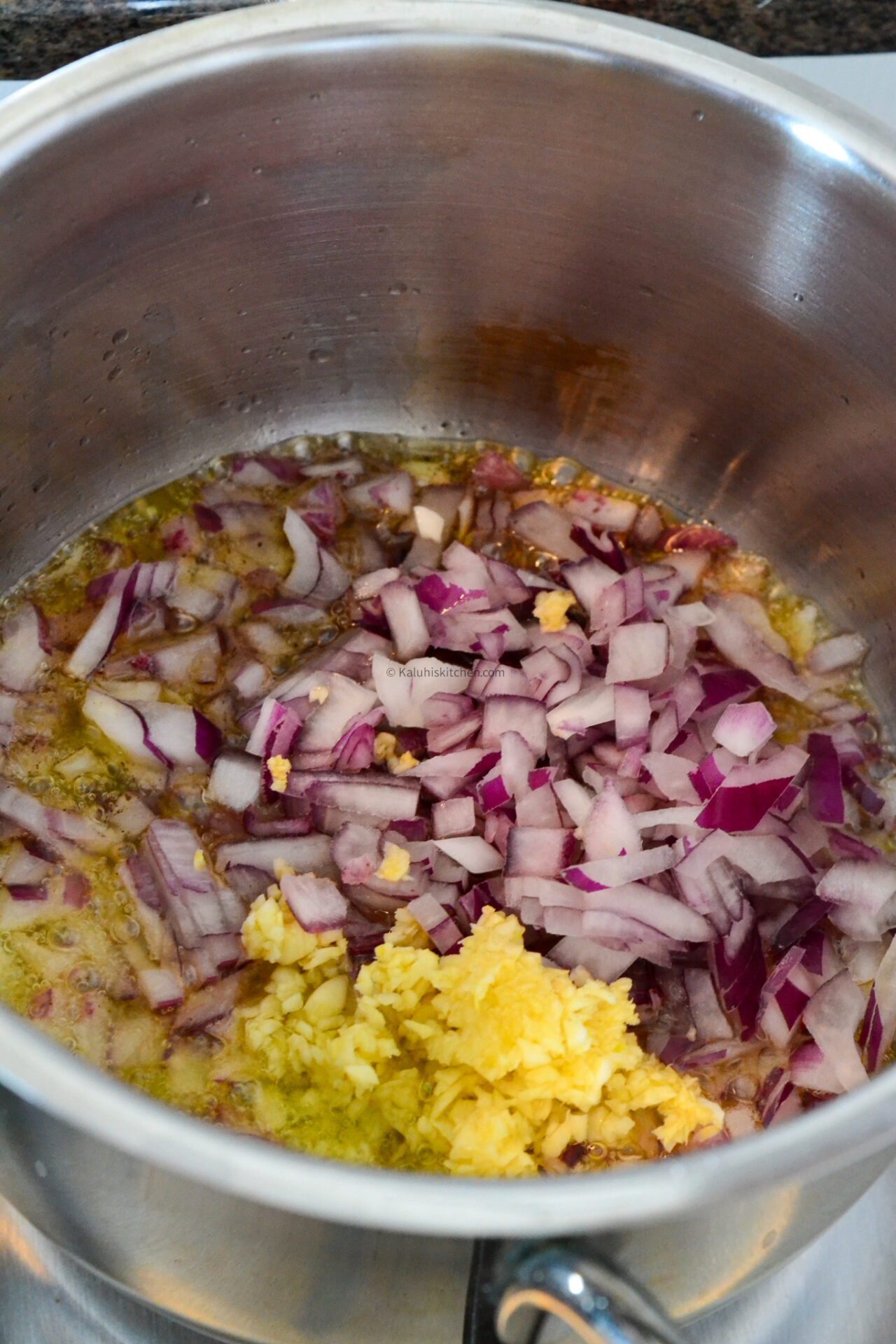
Add the tomatoes and cook until they are softened and disintegrated. Add in the blanched vegetables, followed by the two creams and mix in. I usually only use pure cream for my kienyeji mbogas, but on this day I decided to add in a pop of coconut cream just for an extra interesting note. It was a great decision. Regular cream alone is perfect. Coconut cream alone would not be as great. But both regular cream and coconut cream? It is stellar!
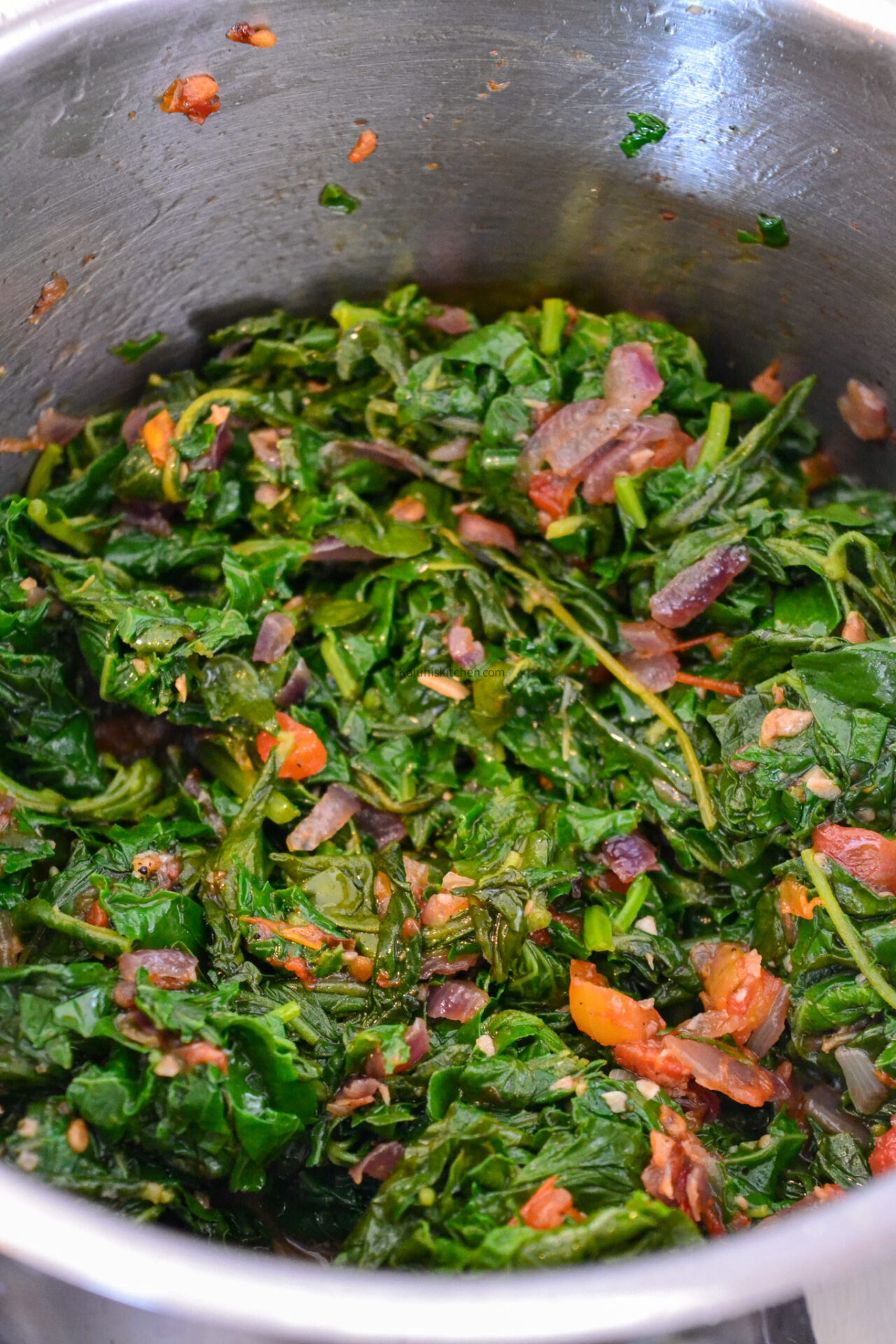
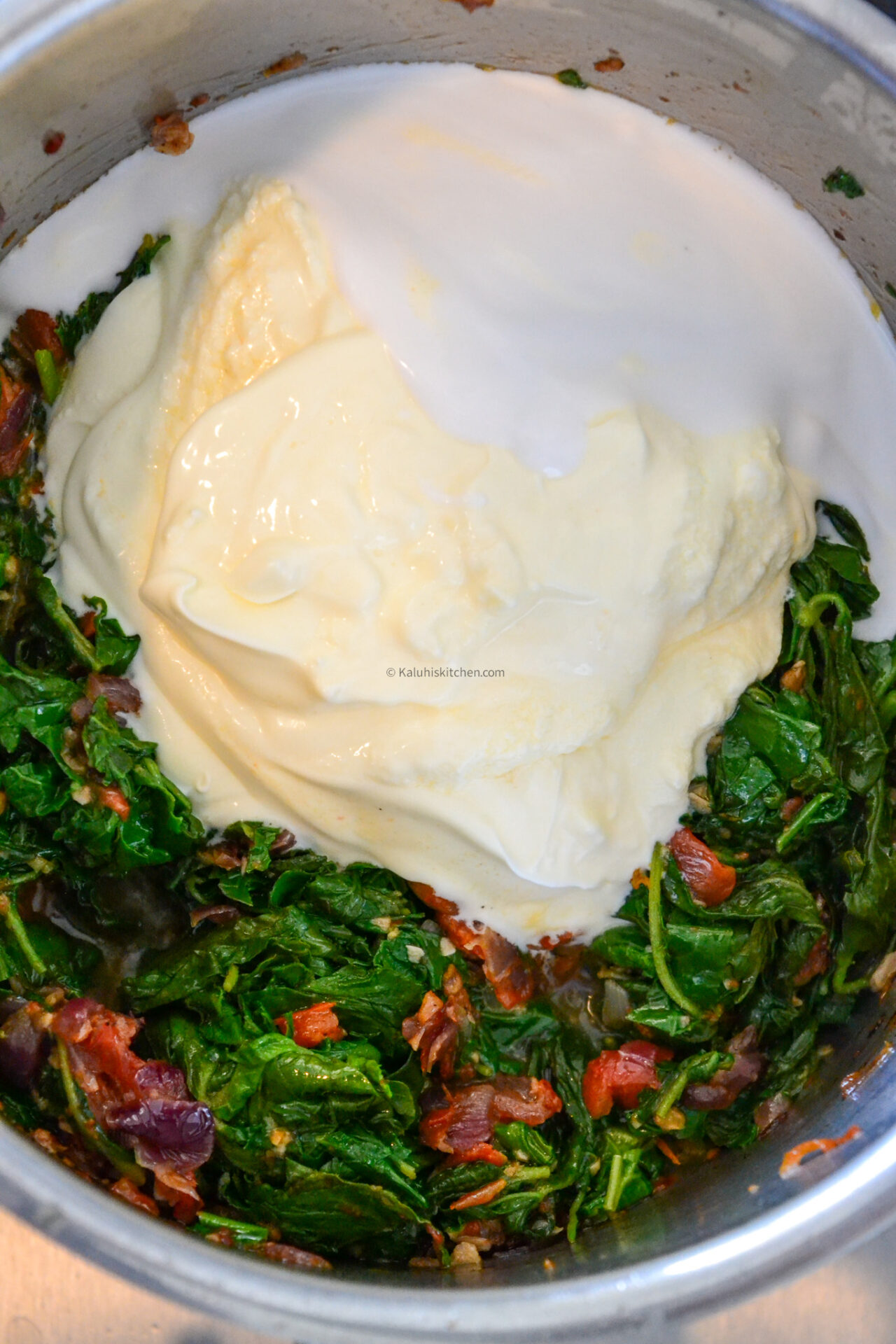
You can watch the process from 4.47 to 5.20 in the video. Allow this to simmer for 2-5 minutes then serve. Does this not look luxurious?
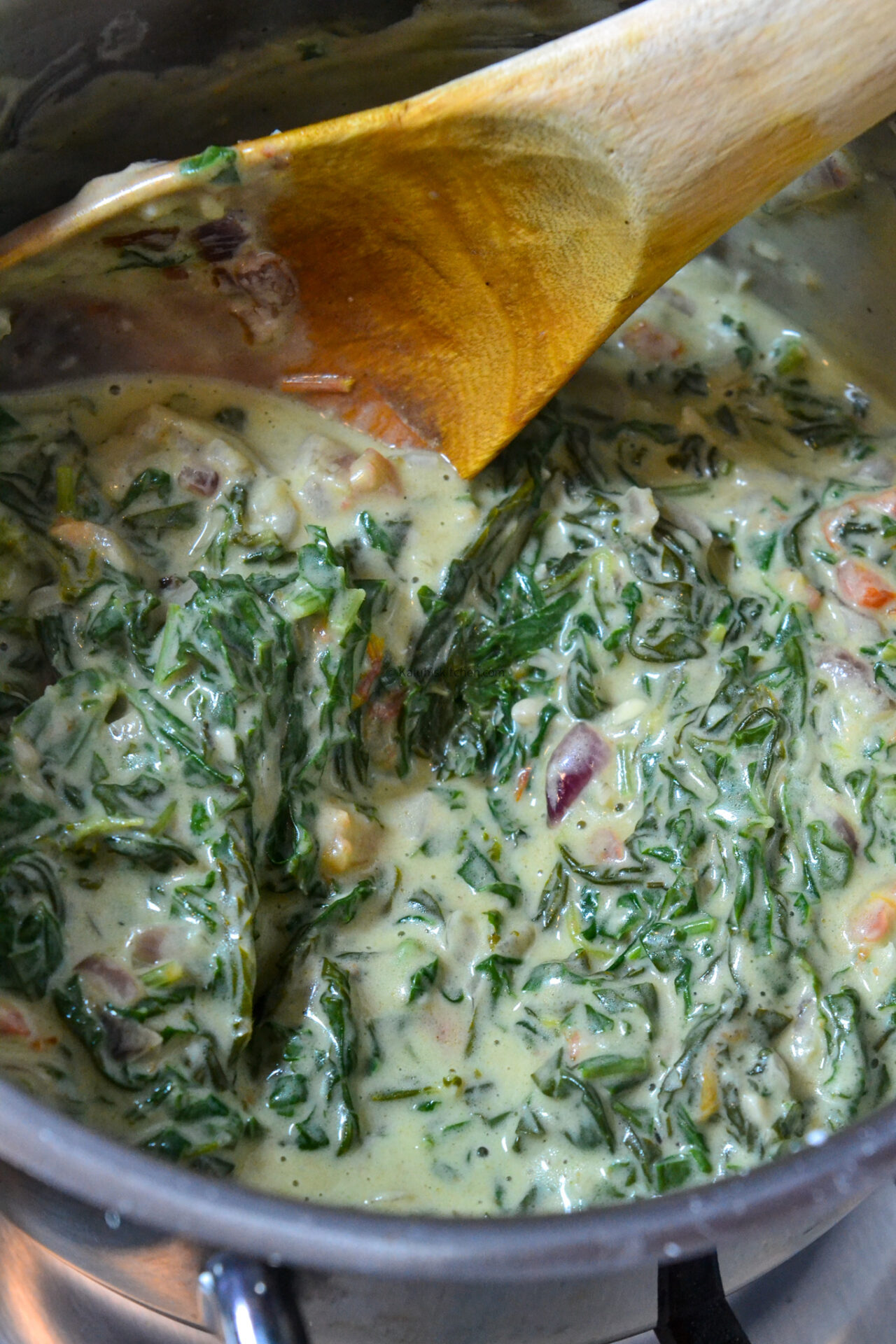
You can serve this with any starch and protein you love but in my very bias Maragoli opinion, traditional vegetables shine best with Ugali!! On this day, I served mine with some mayai and ugali. And honey, It was a glorious feast!
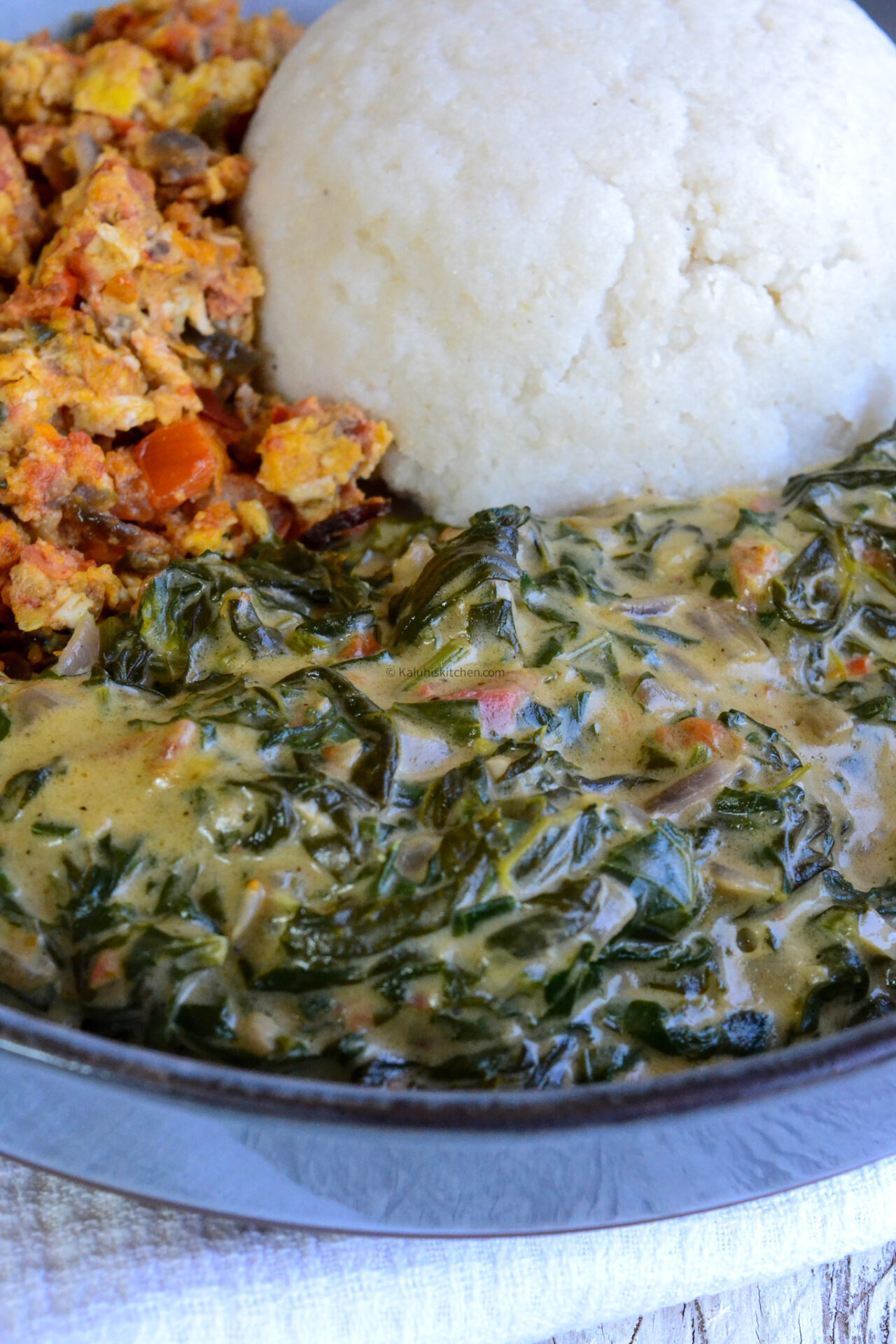
I love how the softness of the kanzira tempered the bitterness of the sagaa, but all the while allowing abit of it’s signature bitterness to peak through. I appreciated that. The overall taste was rich as a result of the two creams and the soft background notes of the garlic and the coconut really elevated the eating experience.
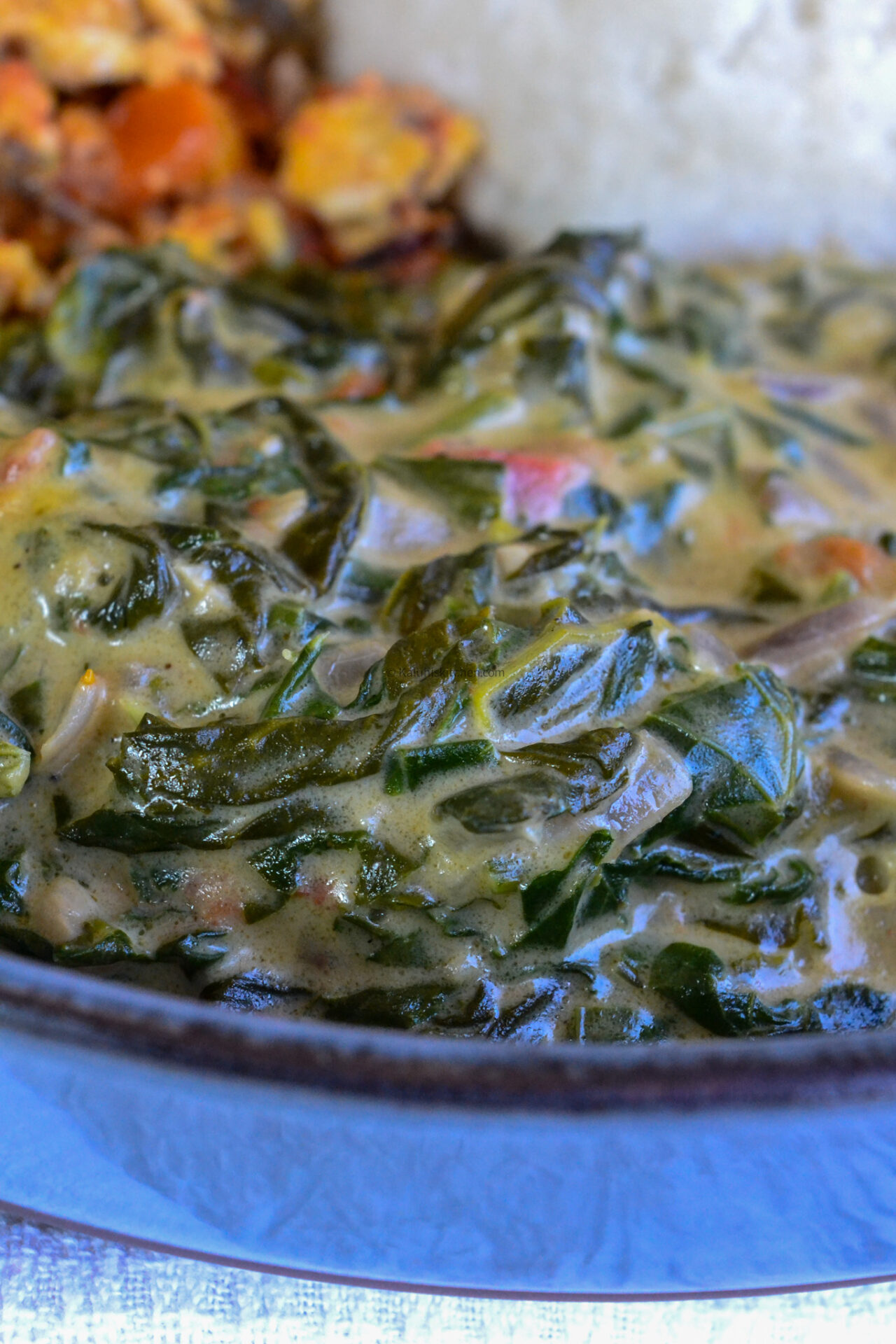
I do hope you get to try this out! We have such a wide variety of amazing vegetables and tsisagaa has got to be among your regulars. I would love to hear how you prepare yours. And in the event you have any question about these mbogas, drop me a DM; I would love love love to help!
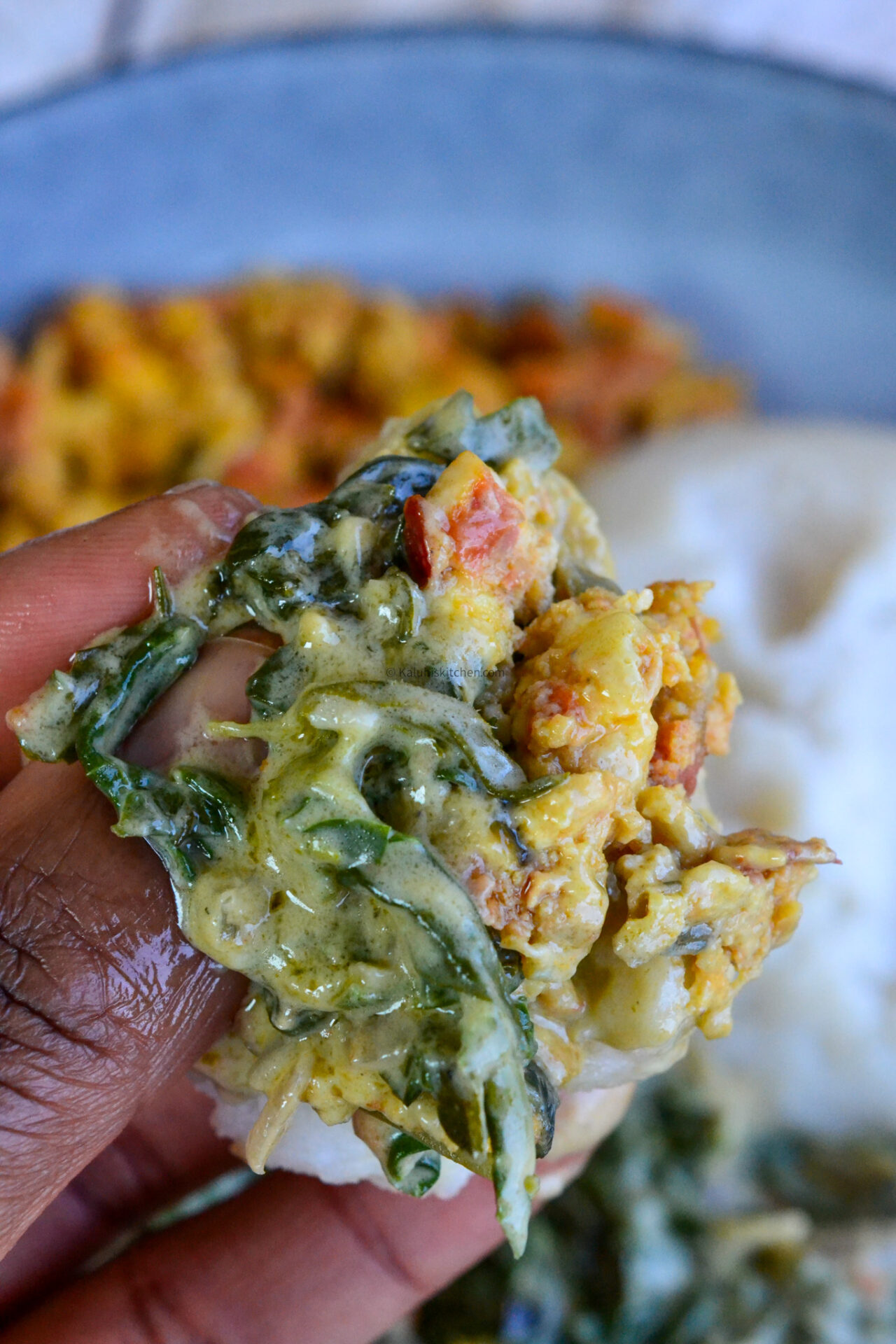
Pass by my channel and watch the complimentary video to this blogpost. And if you are yet to subscribe, please do, I would love to have you!
Thank you for being here, Love!

xx
Get your downloadable recipe here :))
All content and images are copyright protected by

Do not copy in part or whole without giving due credit.
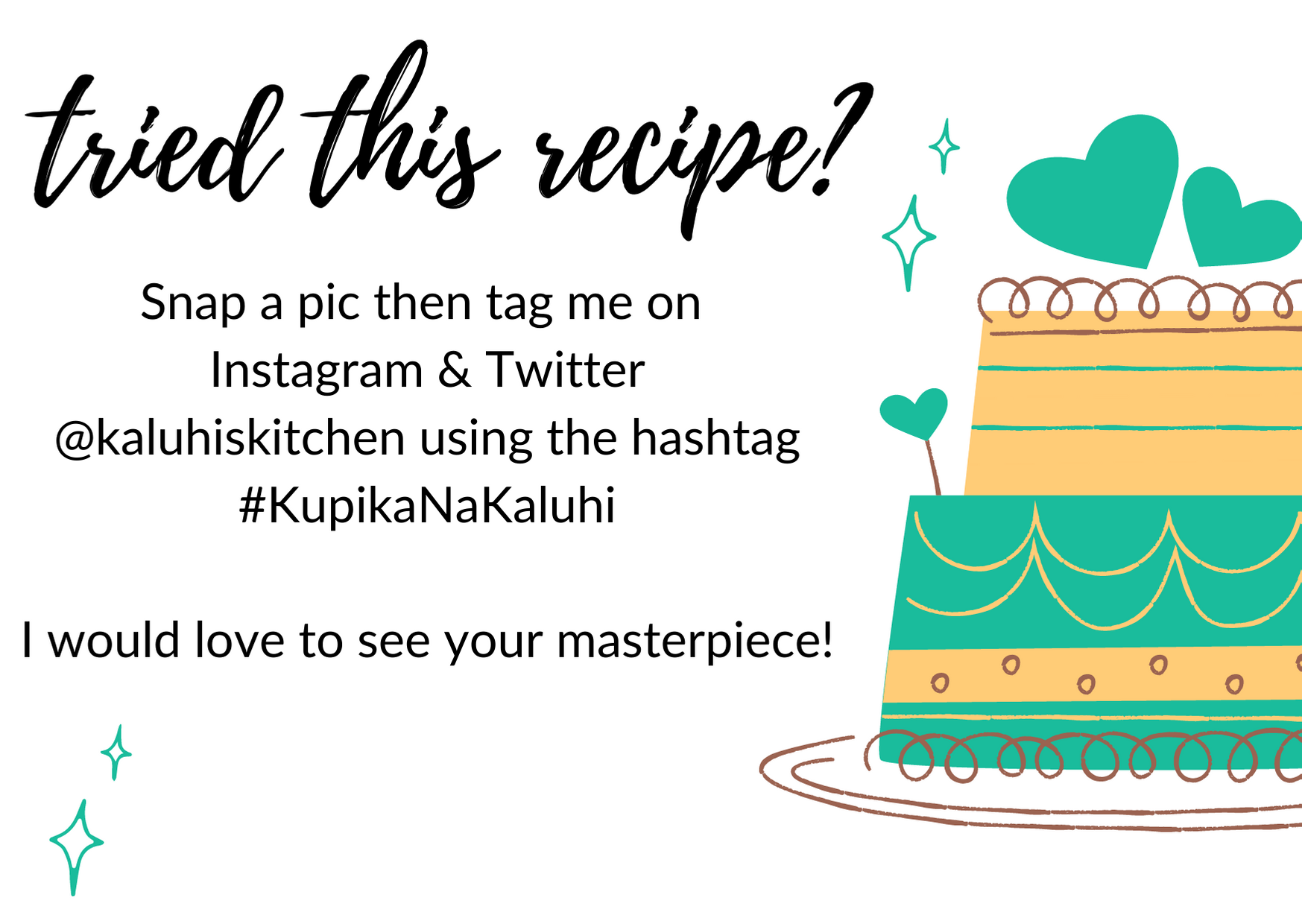

 Hey there! My name is Kaluhi and I love food! Through my blog, I am happy to share with you my self-taught recipes, steeped in nostalgia and the happiest of memories. I hope each recipe you try out is as addictive as the previous one and is shared on a table full of love and hearty laughs!
Hey there! My name is Kaluhi and I love food! Through my blog, I am happy to share with you my self-taught recipes, steeped in nostalgia and the happiest of memories. I hope each recipe you try out is as addictive as the previous one and is shared on a table full of love and hearty laughs!





I went to my local African market and just showed them the ingredients list for this coconut cream tsisagaa and they were able to hook me up with everything I needed. My family really enjoyed the creamy, garlicky flavor of the greens.
Music to my ears! Glad the whole fam bam loved it!
Definitely a unique green dish, especially compared to others we typically make in the US! My family enjoyed it and asked me to make it again. Thank you!
Your most welcome!
You definitely just put me on to a new dish! I can’t wait to make this again. It was so delicious!
Yaaaasss! These are about to be your addiction!
I loved the combination of coconut milk, garlic, and leafy greens. This was such a delicious dish.
Glad you loved it!!
I recently made this garlic coconut cream at home and it was a delightful fusion of flavors. The creamy coconut complemented the garlic-infused Tsisagaa perfectly, creating a unique and satisfying combination that I’ll definitely make again.
Enjoy!!
sagaa in luo is called osuga
I got many repsonses on twitter siting the same but others gave a different term. I will go with Osuga, thank you